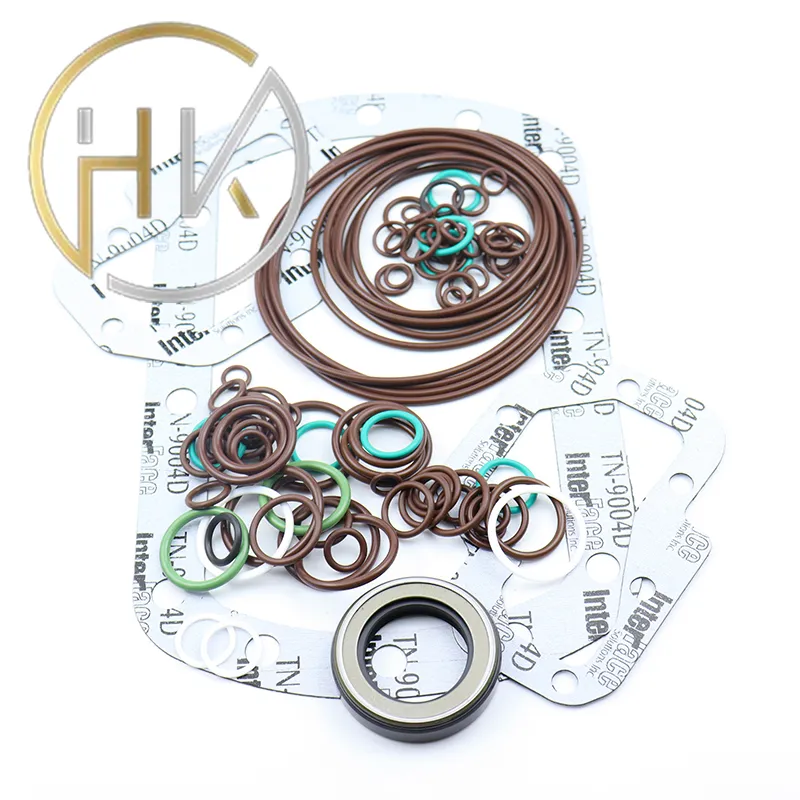9 月 . 26, 2024 04:06 Back to list
Understanding the Function and Benefits of Rotary Oil Seals in Mechanical Applications
Understanding Rotary Oil Seals Their Importance and Functionality
Rotary oil seals, often referred to as shaft seals or rotary shaft seals, play a critical role in various mechanical systems by preventing the leakage of lubricants and fluids. These seals are designed to withstand both high pressure and temperature, making them essential components in applications ranging from automotive engines to industrial machinery.
Function and Design
The primary function of a rotary oil seal is to create a barrier between the rotating shaft and the housing to retain lubricants while preventing contaminants from entering the system. This is vital for preserving the integrity of the machinery and ensuring optimal performance. A typical rotary oil seal consists of two main components a flexible elastomeric lip and a solid outer casing. The elastomeric lip is shaped to create a dynamic seal against the rotating shaft, while the outer casing is designed to fit snugly within the housing, providing stability.
Material Considerations
Rotary oil seals are made from various materials, depending on the specific requirements of the application. Common materials include nitrile rubber (NBR), fluorocarbon rubber (FKM), and polyurethane. Nitrile rubber is widely used due to its excellent oil resistance and ability to function in a wide temperature range. Fluorocarbon rubber, on the other hand, offers superior chemical resistance and is ideal for applications involving aggressive fluids. The choice of material directly impacts the seal's performance, durability, and longevity.
Applications in Various Industries
rotary oil seals

Rotary oil seals are utilized in numerous industries, including automotive, aerospace, construction, and manufacturing. In automobiles, they are commonly used in engines, transmissions, and axle systems to contain lubricants and prevent leakage. In industrial machinery, these seals are essential in hydraulic systems, pumps, and electric motors, ensuring reliable operation and minimizing maintenance requirements.
In the aerospace sector, rotary oil seals are critical in fuel systems, where leak prevention is vital for safety and performance. The high reliability demanded in these applications necessitates seals that can withstand extreme conditions without failure.
Maintenance and Troubleshooting
Despite their robust design, rotary oil seals can wear out over time due to factors such as friction, heat, and exposure to harsh chemicals. Regular maintenance is crucial to prolonging their lifespan. Common signs of seal failure include oil leaks, increased noise from the machinery, and a noticeable drop in performance. Promptly addressing these issues is essential to prevent extensive damage and costly repairs.
When replacing a rotary oil seal, it is important to select the correct size and material to ensure compatibility with the specific application. Additionally, proper installation techniques, including ensuring a clean surface and proper alignment, are vital to avoid premature seal failure.
Conclusion
Rotary oil seals are integral components in mechanical systems, providing essential functions of containment and protection. Their design and material selection are critical to their performance in various applications across diverse industries. Understanding the importance of these seals can lead to more efficient operations and increased equipment reliability, ultimately enhancing productivity and reducing costs. As technology advances, so too will the development of rotary oil seals, promising even greater performance and durability in the future.
-
The Power of Advanced Sealing: High-Pressure Solutions for Modern Machinery
NewsOct.29,2024
-
Optimizing Machinery with High-Performance Oil Seals
NewsOct.29,2024
-
Maximizing Machinery Efficiency with Advanced Oil Seals
NewsOct.29,2024
-
Ensuring Equipment Longevity with Quality Oil Seals
NewsOct.29,2024
-
Enhance Equipment Performance with Quality Oil Seals
NewsOct.29,2024
-
Custom Oil Seals for Specialized Machinery Needs
NewsOct.29,2024
-
The Role of Wiper Seals in Dust Sealing and Oil Protection
NewsOct.20,2024
Products categories
















